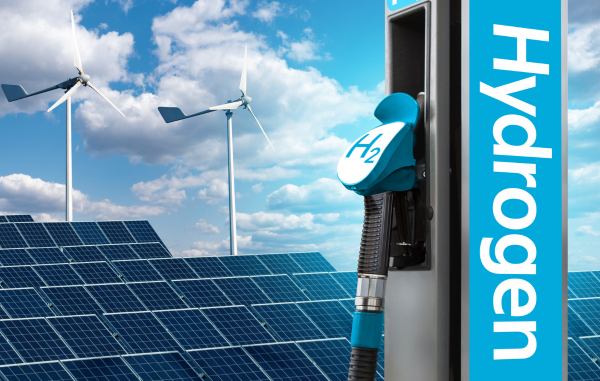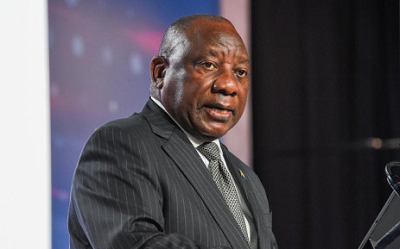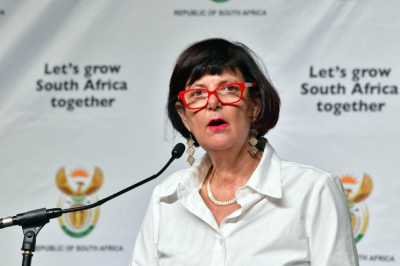

Many people worldwide will tell you that the Just Energy Movement and the gravitation towards a Net Zero Economy are two of the biggest scams currently in the world.
These people are blind to the global events that are only adding fuel to the fire that will accelerate the likelihood of countries getting on board with these movements. The sticking point has always been Africa, with Nigeria and South Africa the only countries on the continent that possess diversified economies to make this move.
It seems as if President Cyril Ramaphosa, who is desperate for political goodwill ahead of an election that could be troublesome for the African National Congress, is starting to pull his party in line and making bold decisions that will benefit the country in the long run.
Green Hydrogen Alliance
At the second iteration of the South African Green Hydrogen Summit (SAGHS), the President acknowledged the collaboration efforts made through the African Green Hydrogen Alliance, including Egypt, Kenya, Mauritania, Morocco, Namibia, Ethiopia, Angola and South Africa.
Government reports that the alliance aims to harness Africa’s potential in developing green hydrogen industries. It aims to make joint calls for technical support, funding and market access to international public and private sector partners.
“The inaugural summit laid a strong policy foundation. This year’s summit has a dedicated project focus, providing an opportunity to demonstrate the degree to which projects have matured and advanced. This is also an opportunity to demonstrate technological developments and advancements in the green hydrogen space.

Image By: government@twitter
“Close cooperation between public, private and financial partners will be key to unlocking Africa’s green hydrogen potential. This will enable mass-scale domestic and international demand for green hydrogen, and increase cooperation on green hydrogen production, storage and distribution infrastructure,” President Ramaphosa said.
At the SAGHS, the President emphasised that if investment is significantly scaled-up, green hydrogen can deliver the equivalent of more than one third of Africa’s current energy consumption, increase the collective GDP, improve clean water supply and empower communities.
He said proper planning, regulation and incentive schemes are critical to mobilise private sector investment.
“South Africa has deep capital markets, with world-class conditions for generating renewable energy through solar and wind power, which are key drivers of the production of green hydrogen.
“Funding green hydrogen projects will require innovative financing structures sourced from multiple stakeholders,” President Ramaphosa said.
Building the green hydrogen industry
In June 2023, South Africa concluded a Heads of Agreement with the intention to launch the SA-H2 Fund. This is an innovative blended finance fund that will facilitate the development of a green hydrogen sector and circular economy in South Africa.
Government reports that the SA-H2 aims to secure $1 billion in funding raised directly in South Africa or via indirect channels. The Fund is a partnership of private and public enterprises, locally and globally.
Since the last Summit, the President said advances have been made towards building the green hydrogen industry in the country.
These include a Joint Declaration of Intent with the German government, focusing on market access, off-take opportunities and value-additive benefits in the production of green steel and green fertiliser.
Government reports that South Africa has also signed a MOU with the Netherlands as an off-taker for green hydrogen derivative products.
“It is encouraging to note that a Memorandum of Cooperation will be signed at this conference by three multinationals in the green hydrogen mobility space, namely Sasol, Anglo American and BMW.
“Sasol will serve as a supplier to Anglo and BMW as part of their focus on commercial and passenger fleet transformation. These are important initiatives within the context of carbon border adjustment mechanisms,” the President said.
Cost burden

Image By: GCIS
While this is encouraging news for South Africa, as always, good news comes with bad.
An article by Moneyweb points out that Minister of Forestry and Fisheries and Environmental Affairs, Barbara Creecy, recently pointed out that South Africa may be able to raise as much as R1.13 trillion over the next five years to fund a switch to green energy from fossil fuels. However, the amount is still short of the R1.5 trillion that the country has estimated it will need for the task.
“This will need to be mobilised from various public and private sources such as multilateral development banks, international partner countries, private investors, philanthropies and the fiscus,” she said.
The article adds that South Africa, which has the continent’s most industrialized economy, is the world’s 14th-biggest source of climate-warming greenhouse gases. In 2021, it won an $8.5 billion pledge from some of the world’s wealthiest nations to help the country transition away from the use of coal, which is used to generate more than 80% of South Africa’s electricity.
Most of the finance is expected to come from private investors, Creecy said in her response. The government has eased regulations to allow businesses to generate their own electricity as state power utility Eskom Holdings doesn’t have the money to expand and regular breakdowns of its poorly maintained plants subject the country to frequent blackouts.
The article points out that possible sources of funding, according to Creecy, include:
- $8.5 billion, or about R160 billion, from France, Germany, the UK, US and European Union under the so-called Just Energy Transition Partnership
- $3.5 billion, or about R66 billion, pledged by Spain, the Netherlands and Denmark
- Potential investment of R500-700 billion by South Africa’s private sector, mainly in new generation
- As much as R200 billion in financing from multilateral development banks and local and international development finance institutions.
Future ramifications
Numbers have been a stumbling block for South African politicians in the past. And with the astronomical nature of the shortfall we face, trepidation may overtake common sense.
However, our politicians need to consider the bigger picture. The Hydrogen Valley is expected to impact GDP and job creation positively. Estimates have placed the potential GDP impact, both direct and indirect, of the hydrogen projects at $3.9 billion (low demand case) to $8.8 billion (high demand case) by 2030 should the full vision of the Hydrogen Valley be realised.
The report adds that estimates also indicate job creation opportunities from projects in the Valley, putting in place about 14,000 (low case) to 32,000 (high case) jobs per year by 2030, should the full vision of the project be realised. Imagine adding $3.9 billion to the economy and 14,000 new jobs within the next seven to eight years?
How will this benefit businesses? A move away from coal towards hydrogen means a stable electrical grid. A stable electrical grid removes the threat of loadshedding being a root cause of financial distress. This can also enable expansion into Southern Africa as neighbouring countries will want to gain insights on leveraging value in a Net Zero economy. BRPs can then move from focusing on business rescue to turning companies around to enable them to grow in this environment.
Why is the value of this transition still a debate?
The Mystery Practitioner is an industry commentator focusing on the shifting dynamics and innovative thinking that BRPs and turnaround professionals must embrace to achieve business success.




